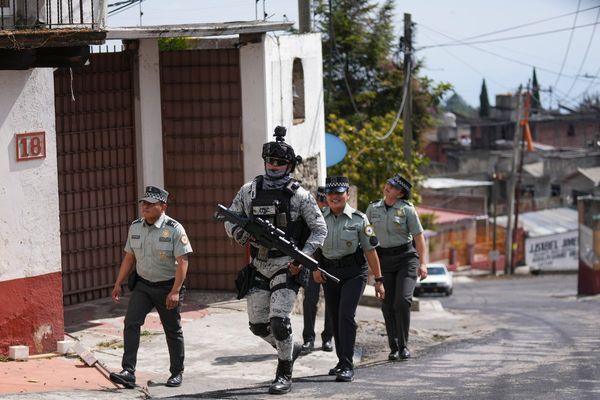PHILADELPHIA — The BA.5 "subvariant" of the coronavirus has rapidly become dominant in the United States, and rising COVID-19 case numbers are dashing hopes for a summer break from the pandemic.
The Biden administration responded Tuesday by once again urging people to get booster shots. But those vaccines are unchanged since their rollout more than a year and half ago. Last month, an FDA advisory committee reviewed data for updated vaccines, but even those newer versions are based on the original omicron variant — not the BA.5 version now on the rise.
As the pandemic drags on, it's fair to wonder if we're ever going to catch up.
The good news is that BA.5 is not some sort of super-virus, contrary to what it might sound like in the more alarmist corners of social media.
And while this latest version of the virus has mutated substantially since the beginning of the pandemic, it's still the coronavirus. The original vaccines remain remarkably effective at preventing serious disease and death — even from BA.5.
Scientists predict that someday, they will develop a "pan-coronavirus" vaccine — one that would protect people against all variants of the coronavirus that causes COVID, along with other, related viruses. In one recent study, University of Pittsburgh researchers and others discovered clues as to how that might be achieved by focusing on internal proteins that all such viruses have in common.
In the meantime, here's the latest on BA.5, and how to reduce risk by taking reasonable precautions.
What are the symptoms of BA.5?
So far, the symptoms of infection with BA.5 seem to be much the same as COVID all along, said Eric Sachinwalla, medical director for infection prevention at Einstein Medical Center Philadelphia.
That means cough, fever, achy joints, and headaches. If you have those symptoms, get tested and stay clear of others, just as physicians have been recommending from the start.
One encouraging difference from earlier waves of COVID: those who get infected these days may be less likely to lose their sense of smell.
Still unclear, Sachinwalla said, is whether BA.5 is as likely to result in long COVID — the brain fog, exhaustion, and other symptoms that can linger for months.
Is BA.5 more transmissible?
With each new rapidly spreading variant, we hear estimates about how much more transmissible it is.
If you add up all those increases in transmissibility, it might seem that COVID now spreads as easily as measles — one of the most contagious viruses known to science.
It's not quite that simple, said Stephen Goldstein, an evolutionary virologist at the University of Utah.
Yes, BA.5 is spreading rapidly, but that in itself does not mean the subvariant is inherently more transmissible than those that came before, he said.
All we know for sure is that is has a "growth advantage" — some combination of mutations that, for now, allows it to outcompete earlier versions of the virus in causing infections.
BA.5 may also be on the rise due to some combination of opportune timing and the behavior of the humans it infects, said Goldstein, who did his Ph.D. on coronaviruses at the University of Pennsylvania's Perelman School of Medicine.
It's been months since most people have had a dose of a vaccine, and their immunity has waned. BA.5 may simply have come along at the right time to make more people sick.
Why the vaccines still work
Hospitalizations have crept upward since the advent of BA.5, but they are nowhere near their peak during the winter surge with the original omicron.
At Einstein's facility in North Philadelphia, for example, a dozen patients have COVID, down from a high of 200 in January, Sachinwalla said.
And generally, hospitalized patients are now much less likely to need a ventilator, he said.
"The people who are doing poorly are those who have other medical conditions and are still unvaccinated," he said.
Vaccinated people can become infected, but remain at low risk of severe disease.
Here's why: If it has been months since your last booster, you won't have high levels of antibodies circulating in the bloodstream, standing at the ready to ward off the virus. The result: infection.
But once a person is infected, the invading viruses prompt the immune system to make more antibodies in a hurry, along with other defenses called T-cells. While that process takes a couple of days, the vast majority of people don't become severely ill.
Still, the illness is unpleasant, and it remains prudent to take other precautions — both for personal protection and limiting spread to others who are more vulnerable, Sachinwalla says. While most places no longer mandate masks, he still recommends the face coverings in crowded, indoor spaces.
What booster should I get?
For now, the FDA has authorized a second booster shot for those over 50 years old, along with people who are immunocompromised.
Those vaccines are based on the original coronavirus. The vaccine makers have since tested vaccines based on the BA.1 version of omicron, and they are now developing vaccines that are tailored to defend against the newer BA.4 and BA.5 subvariants. The FDA has recommended that drugmakers produce a "bivalent" vaccine for rollout late this year — with genetic material from both the original coronavirus and the latest versions of omicron.
For those who have yet to get a booster, should you wait until then?
No, said White House COVID response coordinator Ashish Jha, who spoke at the briefing Tuesday. People will be allowed to get both.
"If you get vaccinated today, you're not going to be ineligible to get the variant-specific vaccine as we get into the later part of fall and winter," he said. "So this is not a trade off."
A vaccine for all coronaviruses
For now, the timetable for newer COVID vaccines may seem somewhat like what happens each year with the flu. Health officials make their best guess about what variant will be circulating months in advance, then give manufacturers the go-ahead.
The process is a bit easier with COVID, as the mRNA vaccines from Moderna and Pfizer can be updated more quickly than traditional whole-virus vaccines, but it still takes months.
That's where a pan-coronavirus vaccine would come in.
In the Pitt study, a collaboration with Georgia Institute of Technology and Emory University, researchers examined the antibodies produced by 21 patients who were hospitalized with severe COVID — seven of whom died.
The analysis looked at several types of antibodies, including those that patients made in response to the protein "spikes" that surround each coronavirus particle — the same proteins that are targeted by the vaccines. But unlike most COVID studies, the authors also analyzed antibodies that latch onto internal virus proteins, said Jishnu Das, one of the senior study authors and an assistant professor of immunology at Pitt's School of Medicine.
It turned out the 14 patients who survived had higher-quality antibodies against some of these internal proteins, said senior author Aniruddh Sarkar, an assistant professor of biomedical engineering at Georgia Tech and Emory. What's more, one of those proteins, called NSP-13, is closely related to internal proteins in other coronaviruses, such as the one that causes SARS — severe acute respiratory syndrome.
That suggests the protein might be a good target for a vaccine against all coronaviruses, though lots more study remains to be done, Das and Sarkar said.
In the meantime, the pair agree with Sachinwalla and Goldstein. The current vaccines are the best protection we have.







